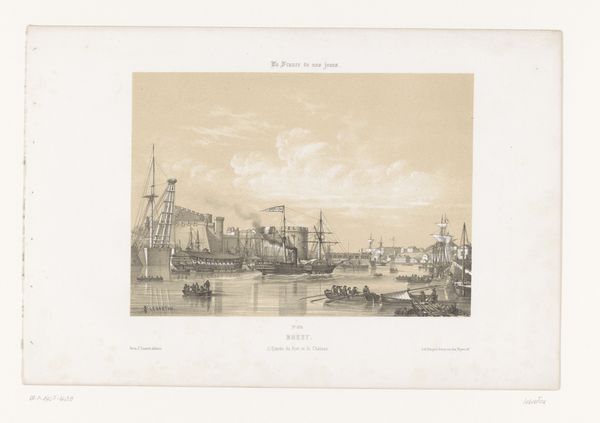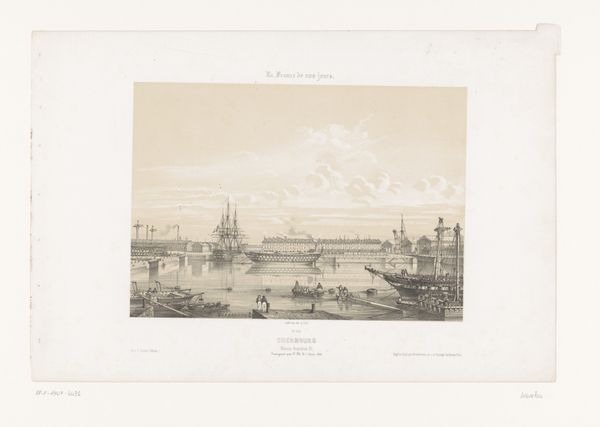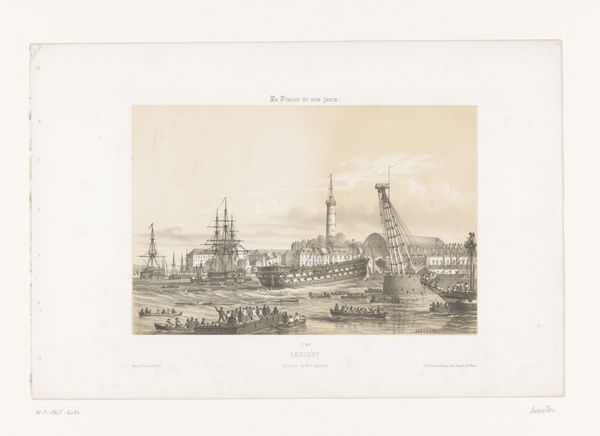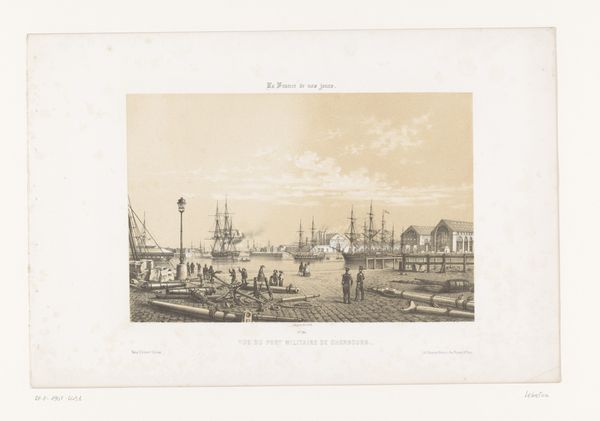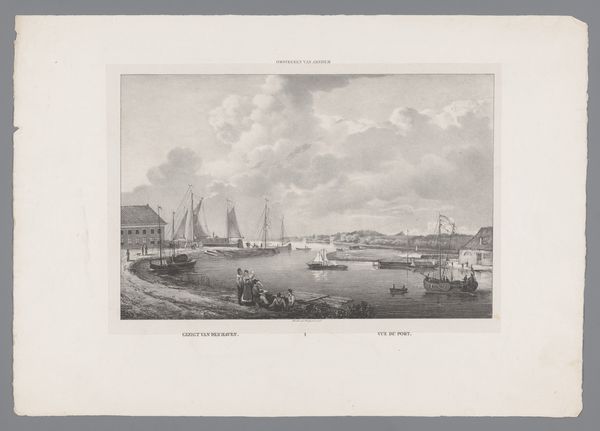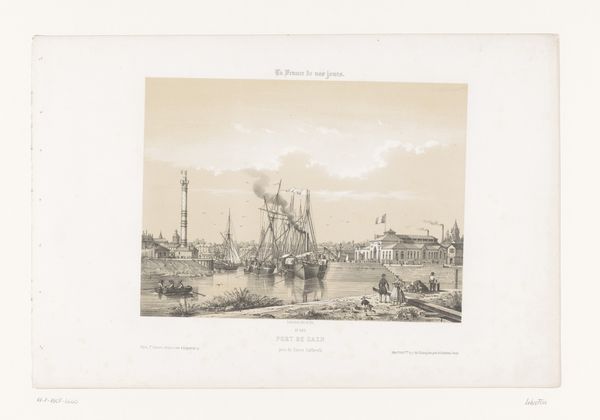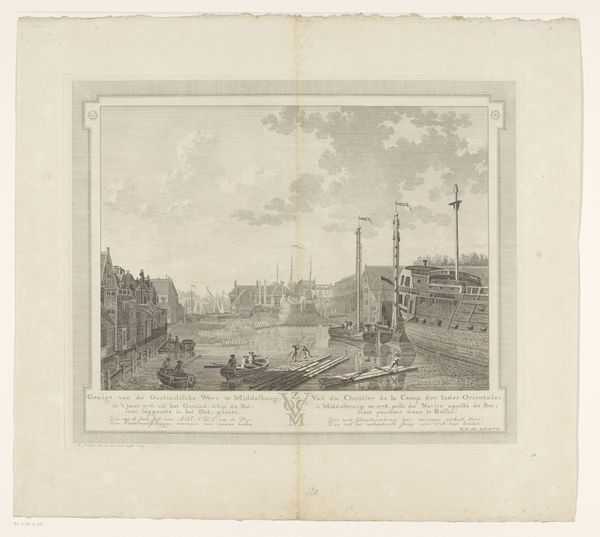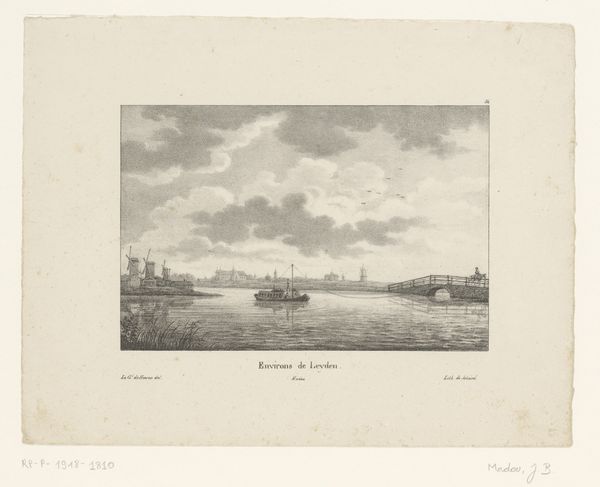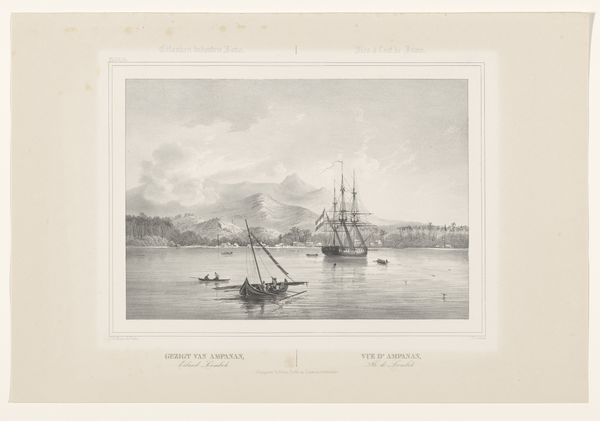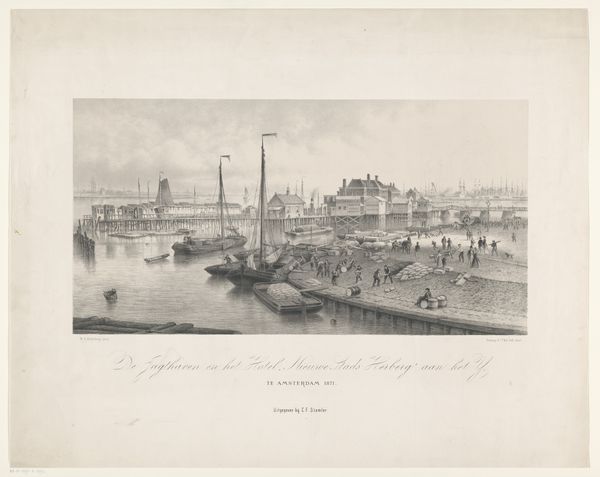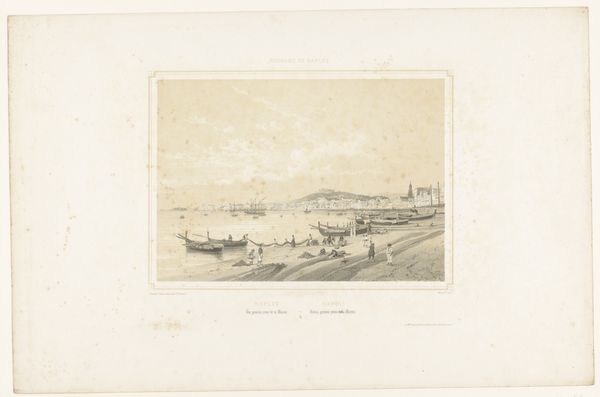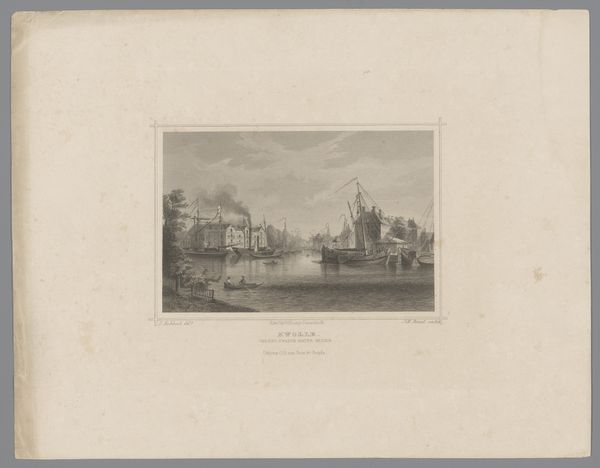
Dimensions: height 290 mm, width 434 mm
Copyright: Rijks Museum: Open Domain
Louis Lebreton created this print of the Arsenal at the port of Brest using lithography, a printing process that democratized image-making in the 19th century. The appearance of this print is deeply influenced by the lithographic process, where the artist draws on a stone or metal plate with a greasy crayon, and then uses ink to transfer the image onto paper. This allows for fine lines and subtle shading, seen in the intricate details of the ships and buildings. The print captures the industrial activity of the port, with its emphasis on naval power and trade. Brest was, and still is, a major military port. Lebreton's print shows a society increasingly shaped by industry and maritime commerce, and the process of lithography itself reflects the increasing mechanization of artistic production. As with all printed images, lithography made possible the wide distribution of propaganda – in this case, a vision of French mercantile and military might. So while it may seem like a simple picture, this print opens a window onto the political economy of its time.
Comments
No comments
Be the first to comment and join the conversation on the ultimate creative platform.
